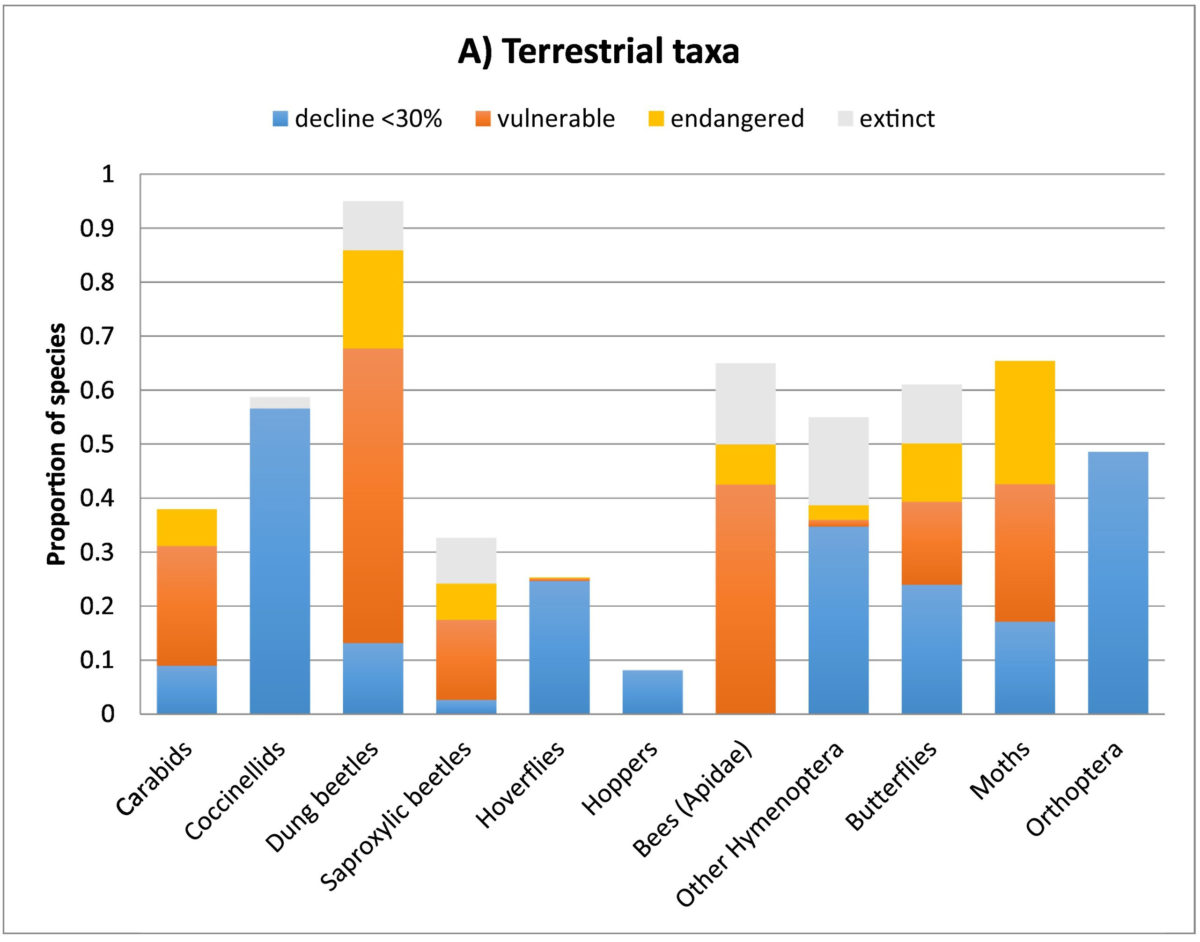
Many insects are vulnerable or endangered. At current rates of decline, all insects may be extinct in a century.
Insects could completely disappear within a century if the current rate of decline continues, according to a scientific review reported in The Guardian.
The first global scientific review found that “the world’s insects are hurtling down the path to extinction.” This threatens a ‘catastrophic collapse of nature’s ecosystems,'” The Guardian said.
Insects are “essential” for ecosystems to function, the researchers say. They provide food for birds, fish and other wildlife. They pollinate most of the food we eat. Insects also recycle nutrients.
“More than 40% of insect species are declining and a third are endangered,” The Guardian continued. “The rate of extinction is eight times faster than that of mammals, birds and reptiles. The total mass of insects is falling by a precipitous 2.5% a year. . . . They could vanish within a century.”
Butterflies, moths, bees, wasps and dung beetles are among the species most affected. Several aquatic species are also declining. The review was published in the April 2019 issue of the peer-reviewed journal Biological Conservation.
Drivers of insect declines
How you can help
- Support efforts to conserve habitat such as urban green spaces and farmland. Some of the groups working locally to conserve and protect green spaces include Forterra, Conservation Northwest, The Trust for Public Land, The Nature Conservancy, PCC Farmland Trust, Earthjustice and Seattle Audubon.
- Buy organic food. Check out the Environmental Working Group’s list of foods with the most and least pesticide residues.
- Do your part to reduce climate change.
- Don’t use pesticides in your yard. See one of our recent blog posts for resources on managing pests naturally.
- Use fertilizers carefully and favor organic fertilizers. The Grow Smart, Grow Safe guide has fertilizer and pesticide ratings, along with natural yard care tips.
- Plant a variety of plants of various types and heights, from ground-hugging grasses to shrubs and tall trees. This will attract and shelter different types of insects.
- Plant flowering plants that bloom at different times to attract beneficial insects throughout the year.
- Don’t make your yard completely neat and tidy. Leave tree snags, brush piles, dead grasses and stems and seed pods. This provides shelter for overwintering insects.
- Consider buying or renting mason bees, leafcutter bees and other pollinators. See our blog post about mason bees.
